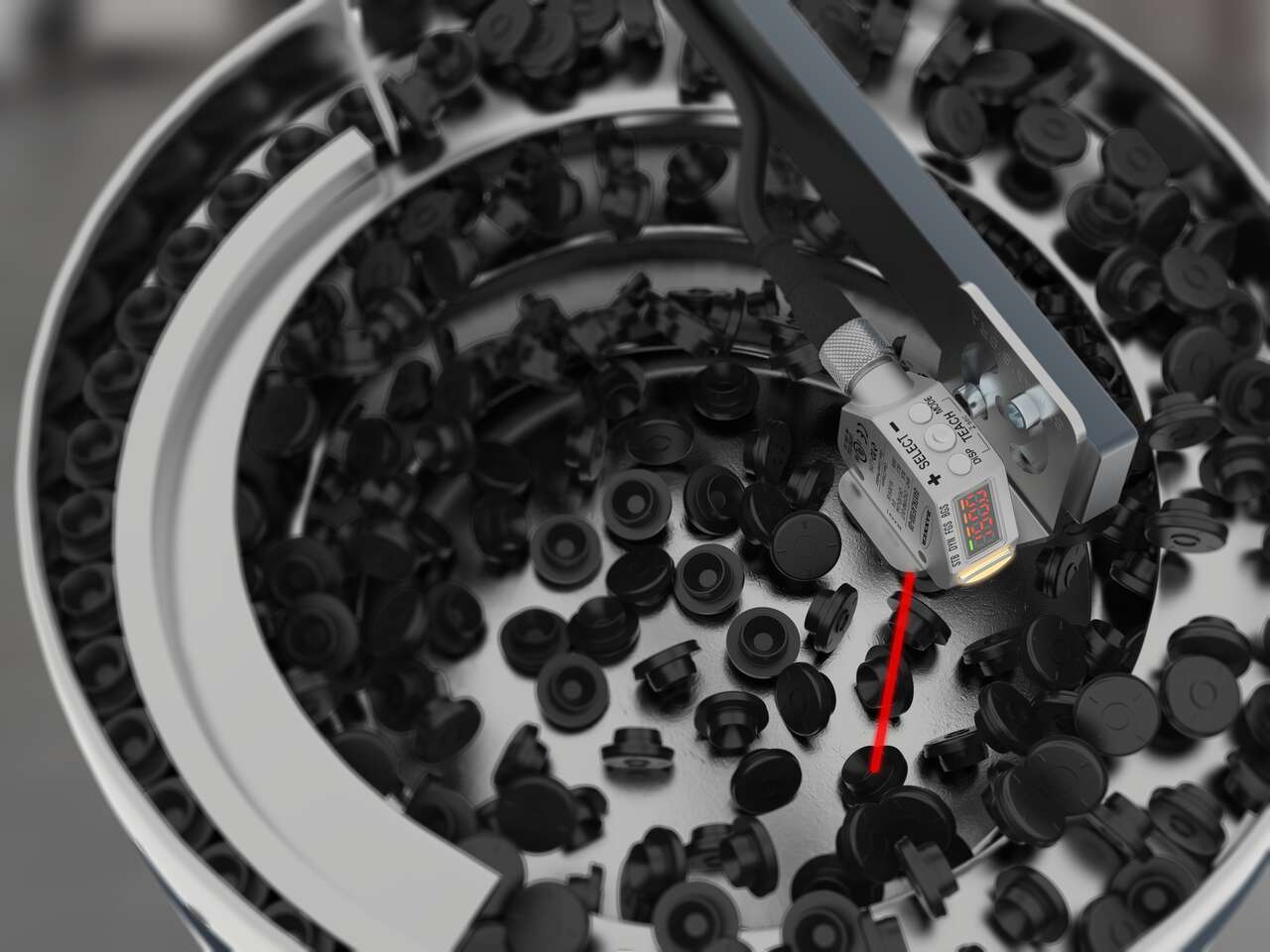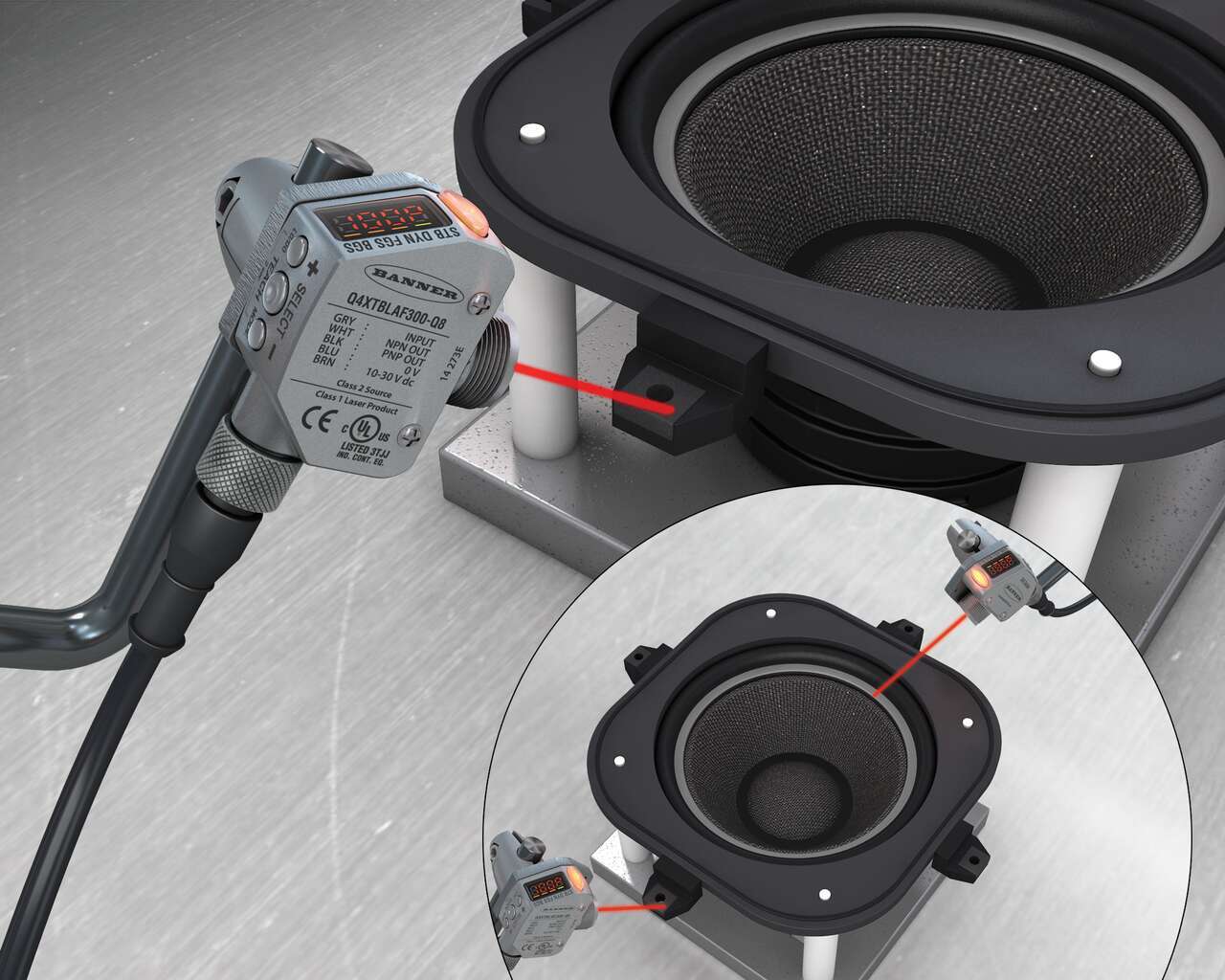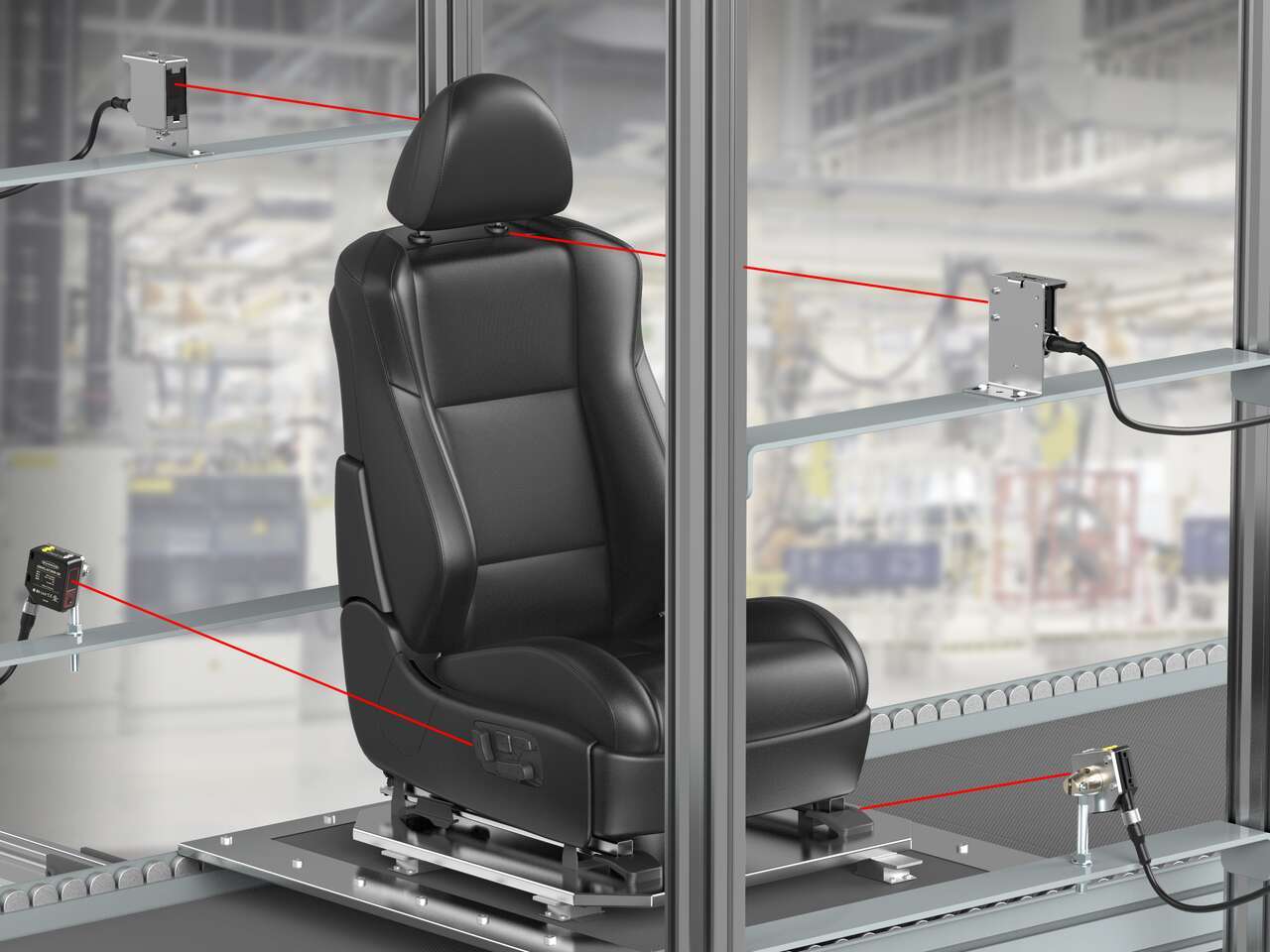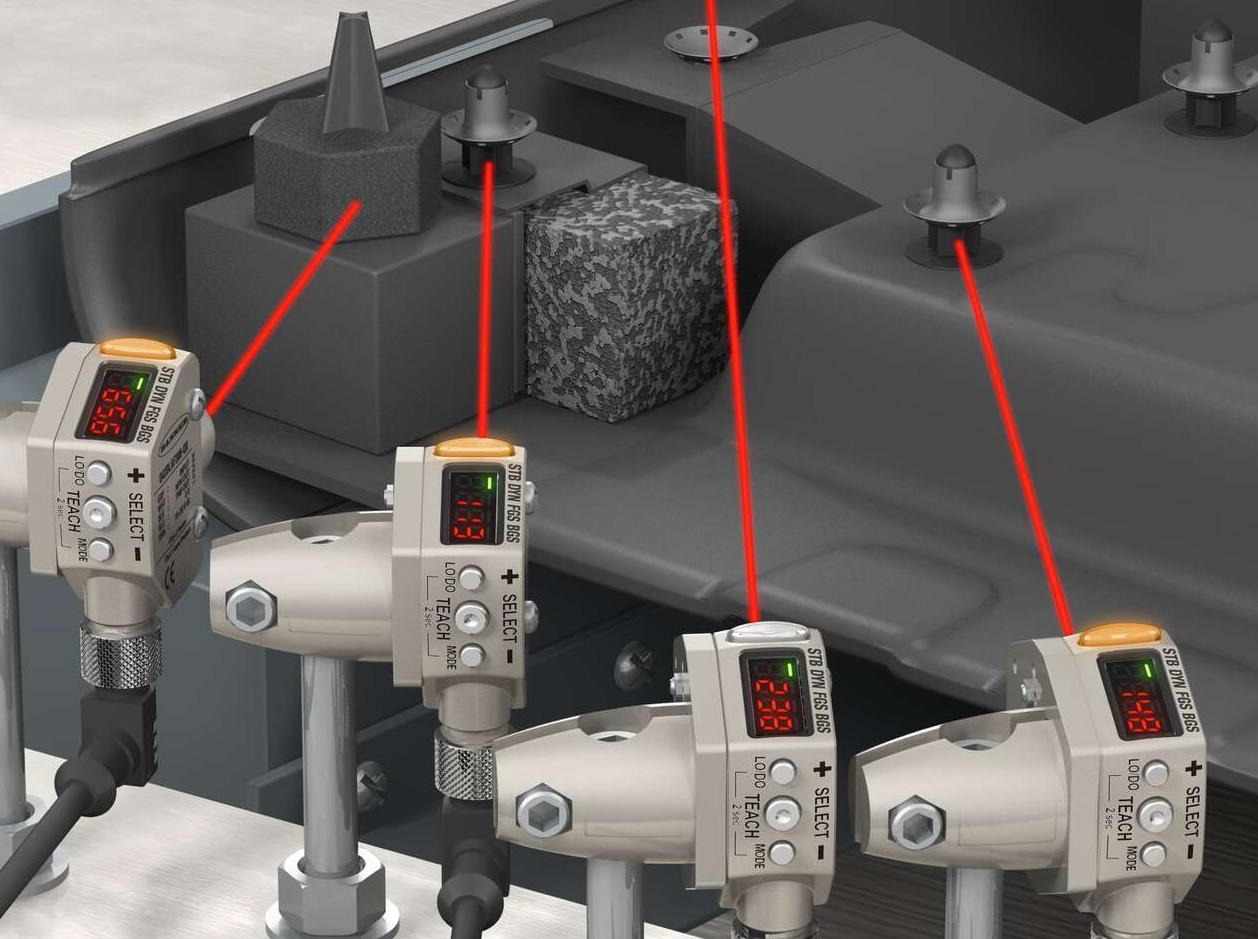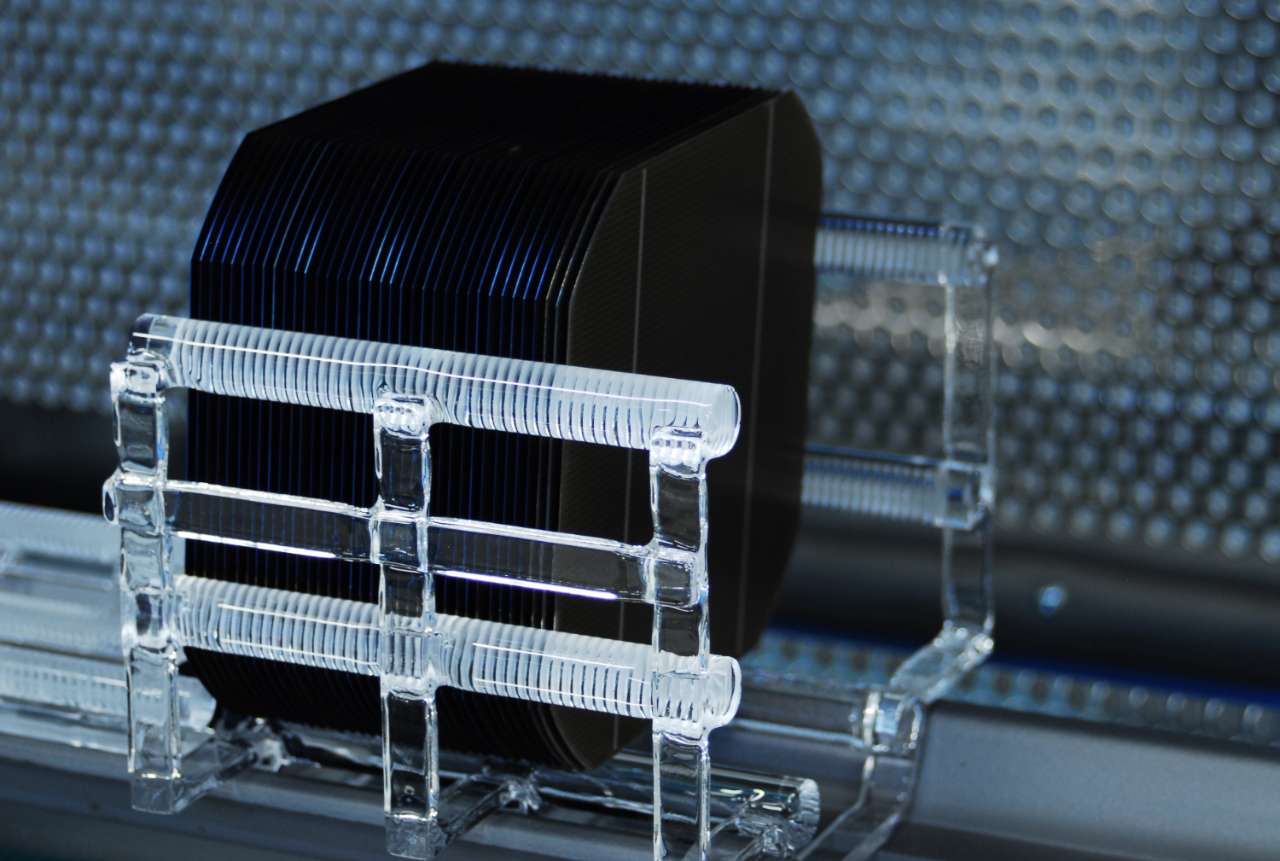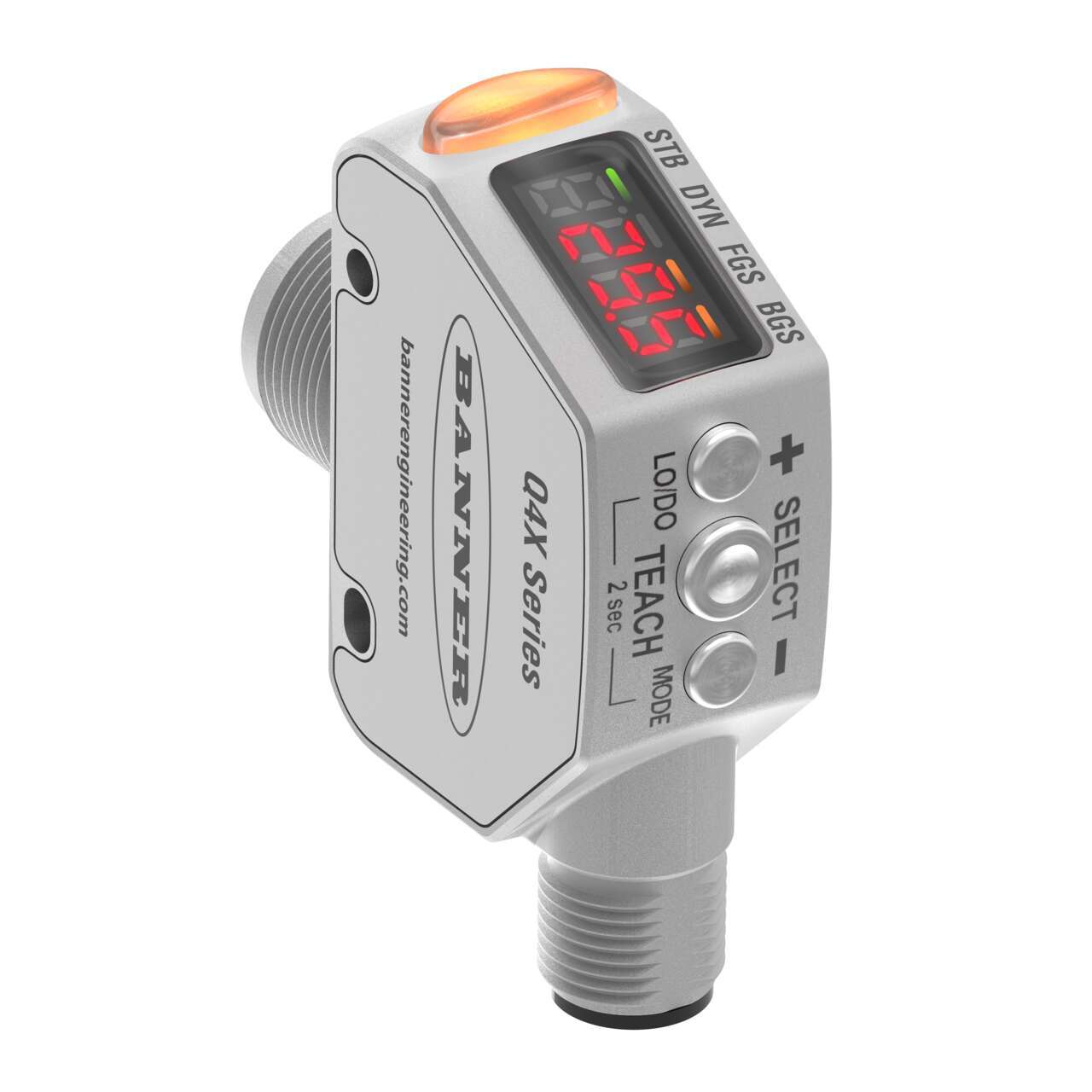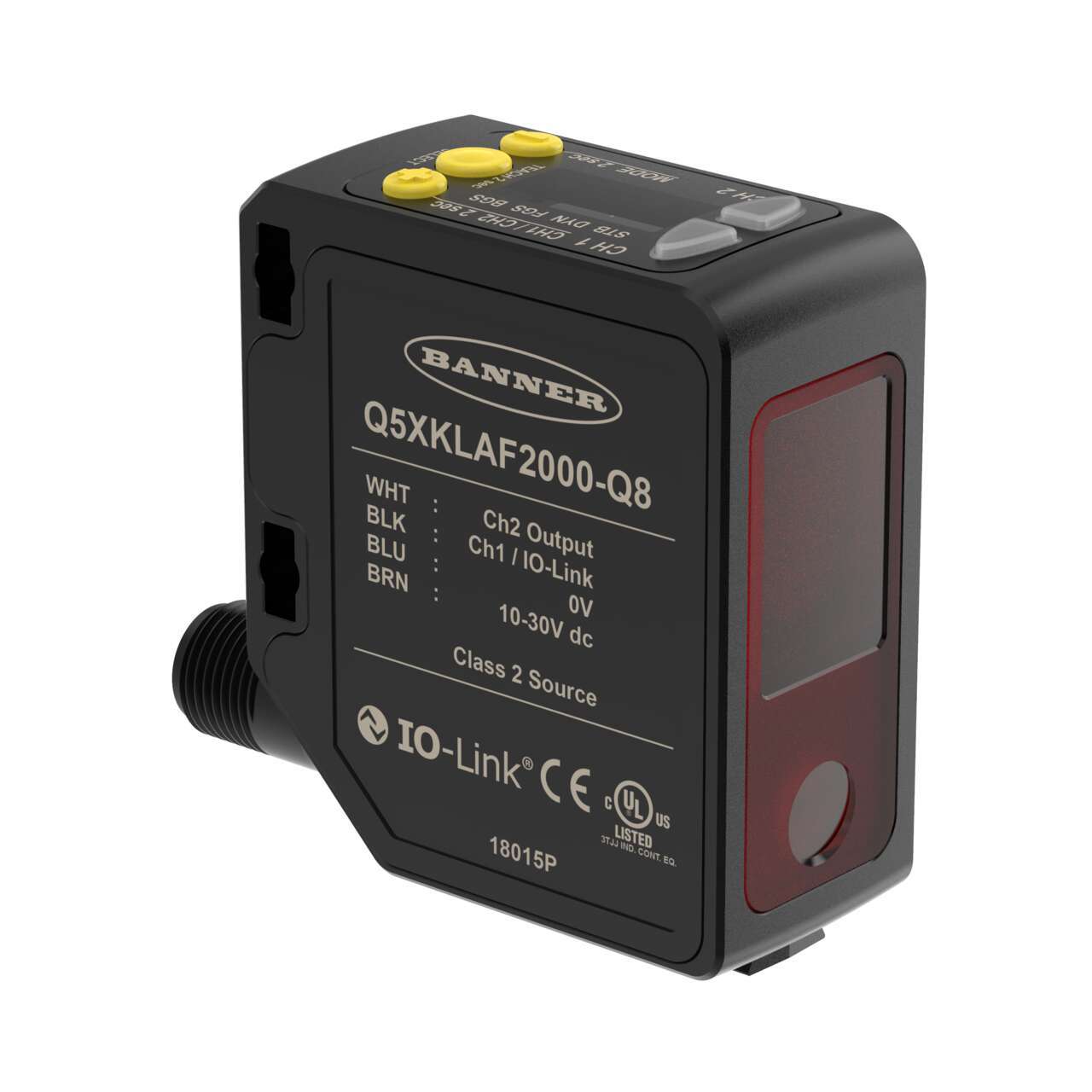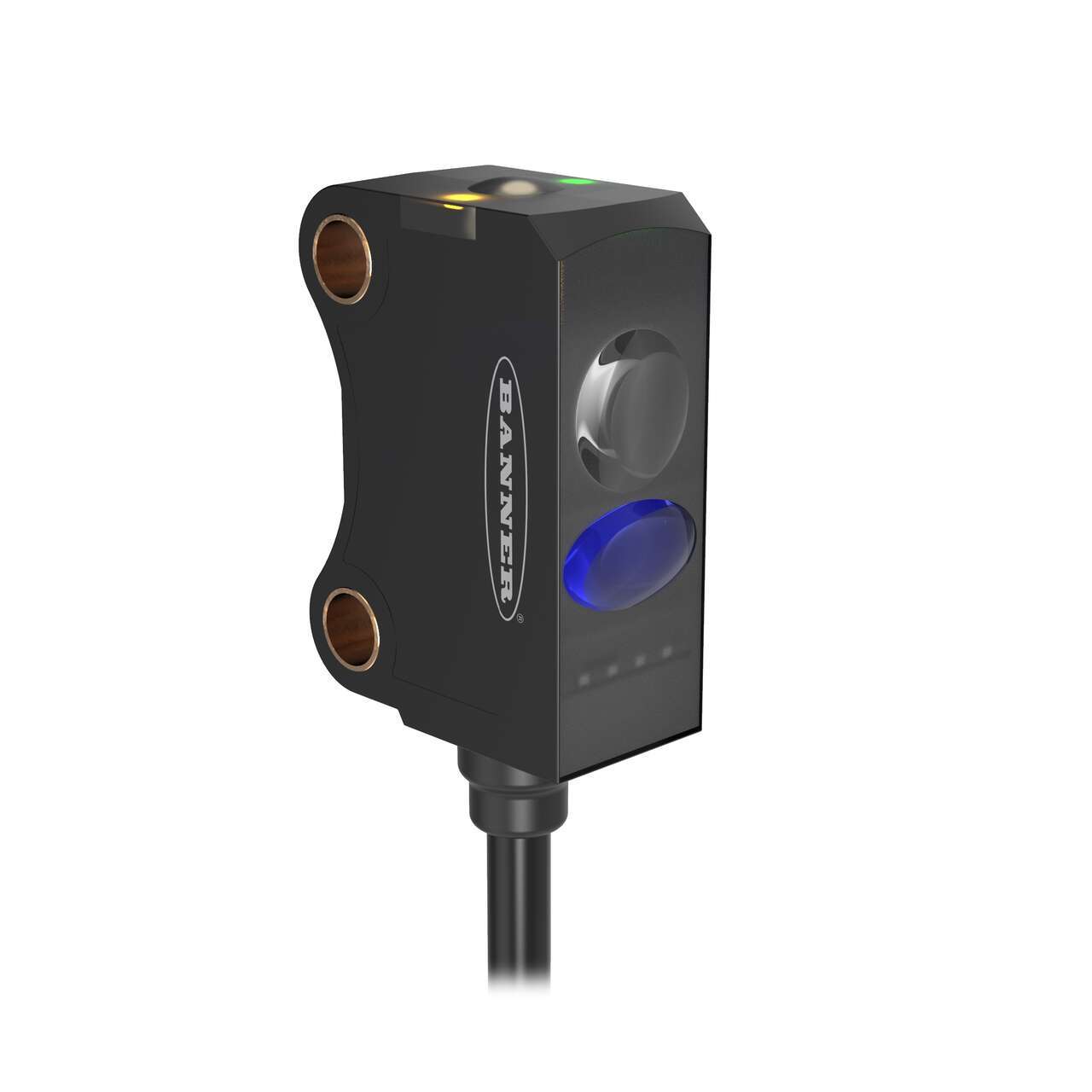Detecting Dark Objects
Dark objects, such as solar wafers or automotive parts, absorb a large amount of light, especially red light. Due to the low reflectivity of these targets, it can be challenging for LED- and laser-based sensors to reliably detect the presence of very dark objects—especially against a similarly dark background.
In spite of the challenges, there are both photoelectric and laser sensors that can reliably solve these applications. Keep reading to learn how to identify a solution for dark object detection.
There are several options for detecting dark objects. A through-beam or retro-reflective photoelectric sensor is an obvious choice since the sensor can easily detect when a dark object passes between the emitter and reciever unit, or when the beam of light between the emitter and a reflector is interrupted. However, in many applications, mounting devices on both sides of the application is impractical, if not impossible.
In these cases, a diffuse sensor (emitter and receiver in the same housing) is required. However, diffuse sensors rely on the target to act as a reflector, and targets must return enough light back to the sensor to verify the object's presence. If a target aborbs the majority of the light, as in the case of dark objects, the sensor may fail to reliably detect the target. To solve these challenges, a sensor with high excess gain, or blue light instead of red, can help ensure reliable detection.
In many of these applications, not only must the sensor detect the dark object, but it must do so against an equally dark background (for example, detecting dark parts on a dark auto body panel). The lack of contrast between target and background is also challenging for many photoelectric sensors to detect. For these applications, a distance-based laser sensor is a must. Keep reading to learn why.
Excess gain is an important metric for any application, but it is especially important when detecting dark objects. Excess gain is a measure of the minumum light energy needed for reliable sensor operation. A high excess gain helps the sensor overcome a weaker signal reflected by a dark object.
The amount of excess gain you need, over and above what you might need for a "typical" target, will depend on how dark your target is as well as the environment of your application. Pristine environments with little dust will require less excess gain than a dirty environment with debris that can cloud the sensor lens and further reduce signal strength.
Fortunately, determining the amount of gain you need doesn't have to be a manual process. Smart sensors can recognize if very little light is returning to the receiver and automatically adjust exposure settings for additional gain and a stronger signal.
Sensors that rely solely on contrast will struggle to detect very dark objects against a similarly dark background; however, these applications are common, especially in the automotive industry. For example, in the application pictured to the right, verifying that foam and other components are present on automotive door panels is extremely important. If any part is missing, the quality of the final door assembly is adversely affected.
Since door panels are often dark colors such as black or gray, and the foam used to eliminate rattles and provide stiffness is generally black, it can be difficult for standard sensors to differentiate between foam presence and absence due to poor contrast. A laser measurement sensor can reliably detect these parts by detecting changes in distance instead of color.
Some targets are designed specifically to absorb red light. For example, solar wafers are designed to absorb as much sunlight as possible and are covered in anti-reflective coating. This makes solar wafers very difficult for traditional photoelectric sensors to detect.
In these applications, a photoelectric sensor with a blue LED light can be a cost-effective solution. Blue light is not absorbed by dark objects to the same extent as red light. Since more light is remitted back to the sensor, a sensor with blue light will be able to detect extremely dark objects with greater reliability.
Laser Distance Sensor, 25-610 mm
Vielseitige, robuste Laser-Abstandssensoren bieten eine herausragende Leistung und können Entfernungsveränderungen von Bruchteilen von Millimetern erfassen.
- Ausführungen mit Schaltausgang, Analogausgang (0 bis 10 V oder 4 bis 20 mA), zur Erfassung transparenter Objekte und mit IO-Link erhältlich
- Zuverlässige Erfassungsreichweite von 25 mm bis 610 mm
- Erfassung von Zielen in diversen Farben, Materialien und Oberflächen anhand der Entfernung
- Doppelter Programmiermodus (Intensität und Entfernung) eignet sich ideal für Fehlerprüfungsanwendungen und ermöglicht die Erfassung transparenter Objekte ohne Reflektor
- Robustes Gehäuse der Schutzart IP69K aus Edelstahl in FDA-Güte
Laser Distance Sensor, 9.5 cm - 2 m Range
Der Q5X Lasersensor mit Hintergrundausblendung ist ein leistungsstarker Sensor zur Problemlösung in einem kostengünstigen Gerät mit rechteckigem Gehäuse nach Industriestandard.
- Reichweite von 9,5 cm (4") bis 2 m (6 ft. 6")
- Dank seiner außergewöhnlich hohen Funktionsreserve erfasst der Sensor zuverlässig besonders dunkle Objekte (schwarze Reflektoren
- Erfasst zuverlässig schwarze Objekte vor schwarzem Hintergrund, schwarze Objekte vor glänzendem Metallhintergrund, durchsichtige und reflektierende Objekte, mehrfarbige Verpackungen und Objekte aller Farben.
- Der duale Teach-Modus misst sowohl den Abstand als auch die Lichtstärke und bewältigt dadurch schwierigste Anwendungen.
Photoelectric Sensor with Blue LED
- Miniatursensor zur Installation selbst auf kleinsten Flächen
- Ausführungen mit rotem Laser bieten einen hellen, präzisen Laserpunkt für eine optimale Erfassung kleiner Teile.
- Ausführungen mit blauer LED erfassen zuverlässig schwierige Objekte, zum Beispiel reflektierende und transparente Objekte ohne Reflektorbedarf.
- Hohe Schaltfrequenz zur Erfassung selbst bei besonders schnellen Prozessen
- Benutzerfreundliche Bedienung über elektronischen Drucktaster oder externen Programmiereingang ermöglicht eine zuverlässige, präzise Erfassung
- Ausführungen mit rotem Laser, roter LED und blauer LED erhältlich, damit der Lichtstrahl zur Anwendung passt.
- Robustes, glasfaserverstärktes Kunststoffgehäuse
- pnp- oder npn-Ausgang, je nach Ausführung
